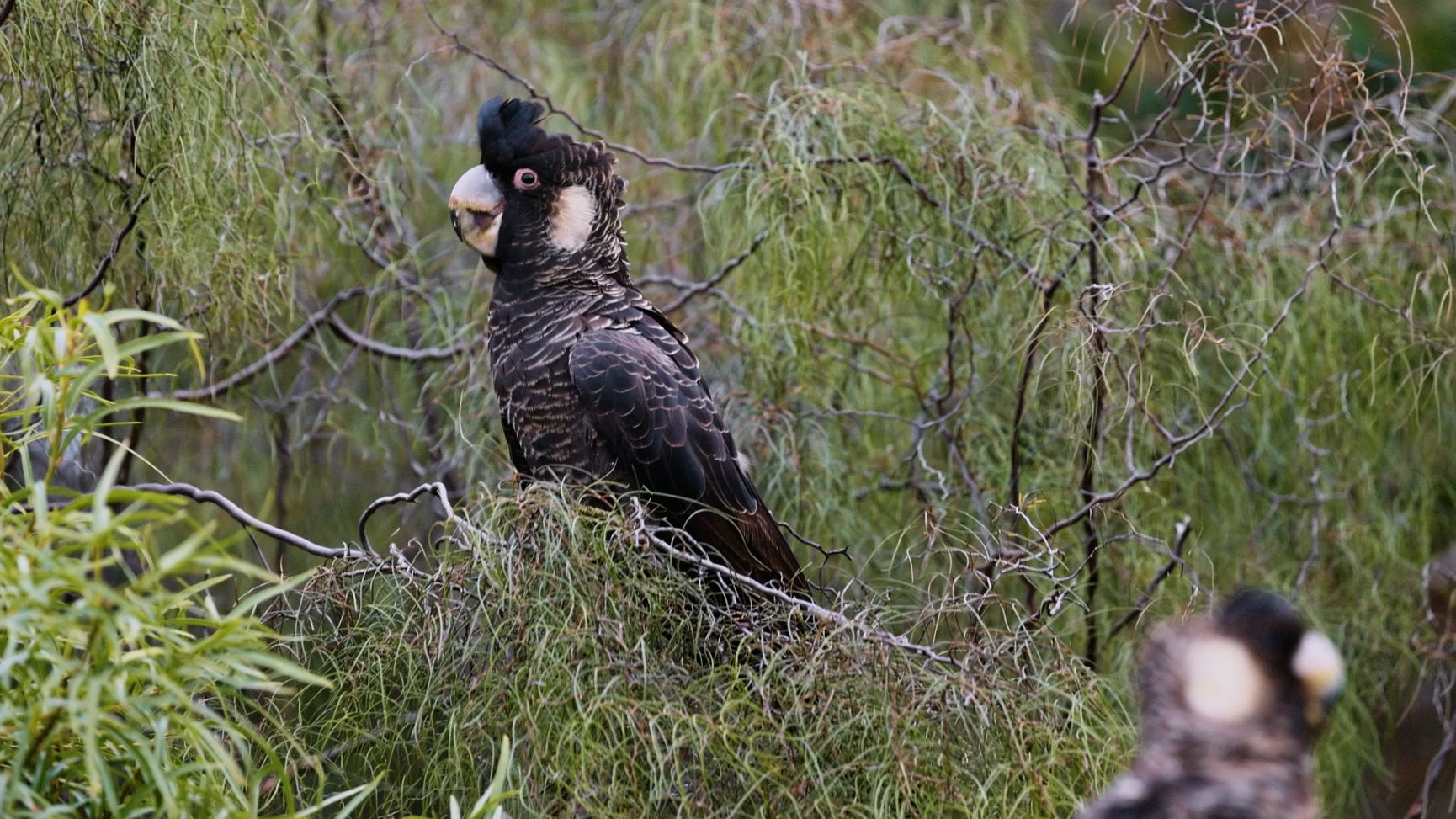Carnaby’s Black Cockatoos are listed as endangered. Their population is estimated to be between 20,000 to 40,000. Much of their habitat has been lost to housing and agriculture.
Once found in large numbers across a wide area of south west Western Australia, the birds are now considered locally extinct in many areas of their former range. Since white settlement nearly 90 per cent of the Carnaby’s range has been cleared. They are now restricted to pockets of remnant vegetation for nesting.
The birds spend part of the year in foraging grounds including the Swan Coastal Plain, which has been extensively cleared to make way for the sprawling city of Perth. They have adapted to city life but it brings many dangers including vehicle strikes.
Carnaby’s are highly social birds and can gather in flocks numbering thousands. But these are now becoming very rare and large flocks are more likely to be counted in the hundreds.
Carnaby’s are one of only two species of white tailed black cockatoo found anywhere in the world. They were only classified as a seperate species to their fellow white tails the Baudin’s in the late 1940s. They are named in honor of farmer and naturalist Ivan Carnaby who first noted they were different to the longer beaked Baudin’s Black Cockatoo.
With thousands of hectares of their former feeding grounds cleared for pine plantations in Perth’s north the Carnaby’s have adapted to the pines for feeding and roosting. But a government decision to clearfell all of the pines and not replace them nor replant the area with native vegetation has left the Carnaby’s facing possible starvation.
